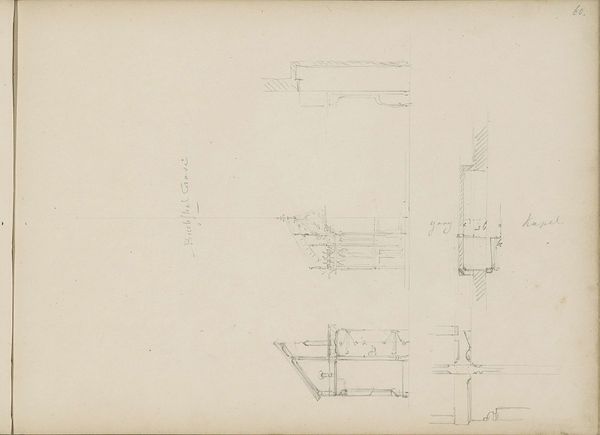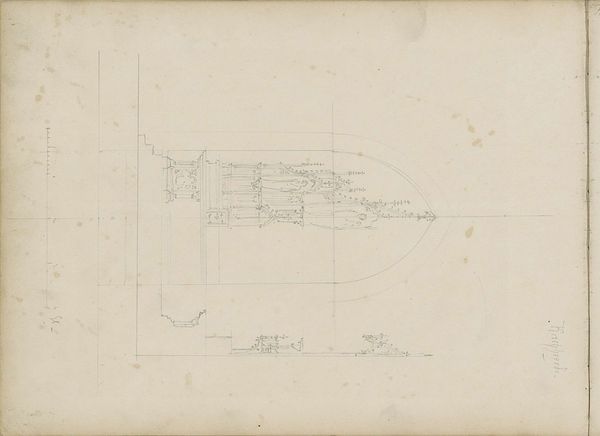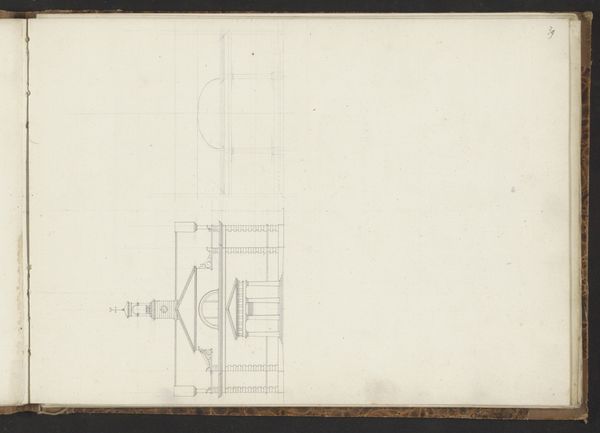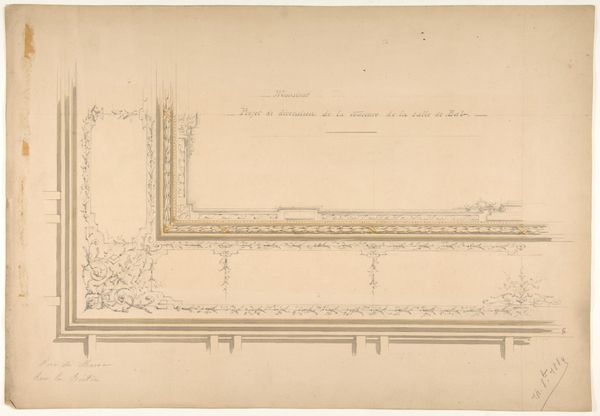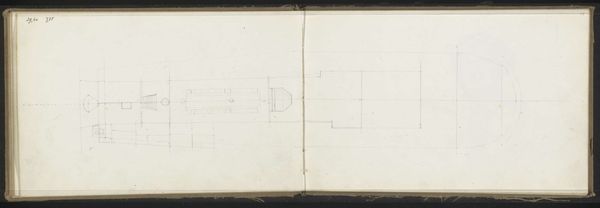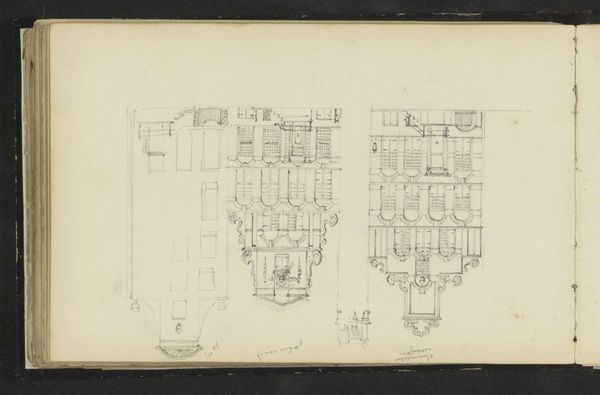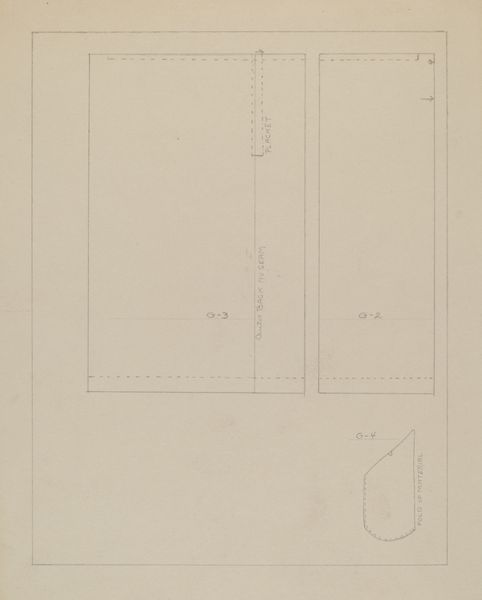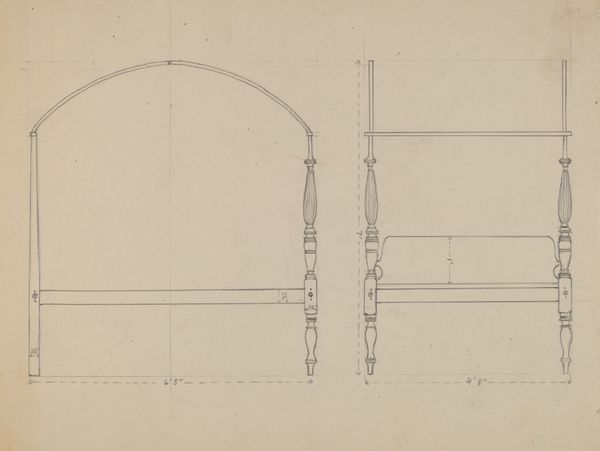
drawing, pencil, architecture
#
architectural sketch
#
drawing
#
amateur sketch
#
aged paper
#
toned paper
#
light pencil work
#
sketch book
#
incomplete sketchy
#
hand drawn type
#
form
#
personal sketchbook
#
pencil
#
line
#
sketchbook drawing
#
academic-art
#
architecture
Copyright: Rijks Museum: Open Domain
Editor: So, here we have "Schoorsteen," a pencil drawing by Pierre Joseph Hubert Cuypers, made between 1857 and 1859. It's currently housed in the Rijksmuseum. It appears to be an architectural sketch, maybe for a fireplace. It has such delicate lines... What do you see in this piece, beyond just a preparatory drawing? Curator: It's a window into the 19th century's obsession with historicism and nation-building. Cuypers, a key figure in the Gothic Revival in the Netherlands, wasn't just designing structures; he was constructing a national identity rooted in a romanticized past. We see this architectural sketch and might overlook its potential to challenge prevailing, classist ideals. How might revisiting these traditional, historical models destabilize dominant power structures and aesthetics? Editor: So, you're saying it's more than just a nostalgic look back? How does this drawing specifically tie into those power structures? Curator: The fireplace, the "Schoorsteen", in its grand form was historically a symbol of wealth and power, the center of the home, both physically and socially. Cuypers, through his designs, was subtly democratizing that image, making historical styles accessible. It prompts us to consider the politics of architectural revival and who has access to beauty and tradition. Can revisiting and repurposing historical elements challenge existing social norms and empower marginalized communities through a reconnection to heritage? Editor: That's fascinating! I hadn't considered that reclaiming historical styles could be a form of empowerment. Curator: Precisely! Cuypers' work underscores the power of design to shape not only our physical surroundings, but also our cultural and political landscapes. Think about it - how might buildings designed with community input foster greater social equity and cultural expression? Editor: It gives me a whole new appreciation for what seemed like a simple sketch! Thank you. Curator: And it to me! It is precisely these conversations which help challenge my own taken-for-granted notions, opening new perspectives for action.
Comments
No comments
Be the first to comment and join the conversation on the ultimate creative platform.
